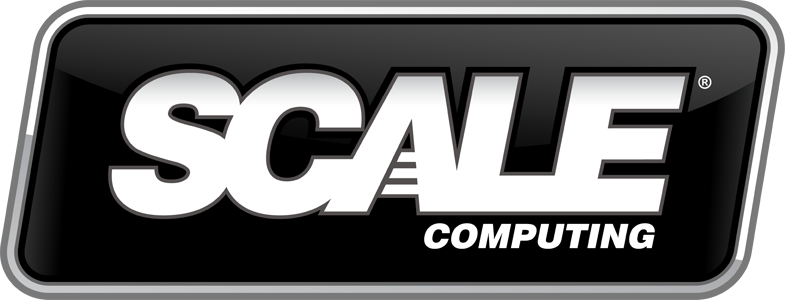Scale sell a converged platform: compute and storage in pizza boxes that glom together to make a cluster of 3 to 8 nodes, like Voltron. It’s based on KVM, with proprietary bits added into the mix.
Scale make a big deal about “no licensing” or, as they call it, a ‘vTax’. I have to admire the choice of vTax as the descriptor; it’s some clever marketing. Scale emphasise that you don’t have to pay licensing fees for VMware (or Hyper-V, or Virtualbox, or whatever) which saves you money. Sure.
You know how much I hate a “it’s cheaper!” positioning, but in this case, it looks like it might actually be well aligned with their marketing strategy.
Let’s look at the specs of the top line nodes Scale sell, the HC3x, and I’ll explain my thinking.
Scale Specs
HC3x nodes are 6 core, 12 thread, 2.2GHz CPUs, with 64GB of RAM (at 1333MHz). Storage is 4 SAS drives, 15k RPM 600GB, 10k RPM 900 GB or 10k RPM 1200 GB. Networking is 2 x 10GbE active/passive (presumably for data and cluster comms) and 2 x 1GbE (for management).
Using Scale’s VM sizing assumptions, Scale say you can get 200 VMs on a cluster. That’s a small to medium size cluster, so now we can clearly see the target market for Scape: small to medium enterprise, and that’s medium in an Australian sense, not a US sense (everything is bigger in Texas).
The storage of the nodes is aggregated into one dirty great pool of “some storage” and all of it is available to all of the nodes if they want it, which is nice. There is a protocol abstraction layer, which means you can talk to the storage pool from remote servers over your favourite Ethernet based protocol: SMB, NFS, or iSCSI. This means you can have both file and block storage from the one platform, like a NetApp (with no FC), but it does compute as well. Nifty!
VM files are stored internally on an NFS fileshare, but appear to the VM like a disk, so similar to NFS storage pools on VMware. The virtual harddisks use the open qcow2 format. VMs recover from a node failure by restarting, not active/passive failover, so bear that in mind.
A RAM cache on each node helps to speed up access to commonly blocks for VMs on a given node: they can read from cache without having to fetch from storage over the network. Scale also support a form of write-back caching to cache some writes as well.
Scale Marketing Strategy
Overall, the Scale offering seems to match their positioning well: it’s targeted at mid-size firms who don’t want all the extended bells and whistles (and prices!) that come from servers with VMware ESXi, or a higher end converged system like a Nutanix or SimpliVity. It has plenty of the useful features needed to run typical mid-size workloads, and if the UX is as simple as they say, it makes it easy for your typical IT generalist to operate.
IT for these midsize firms isn’t really value-adding, it’s just cost of doing business. They have to have finance and accounting, HR, payroll, inventory tracking, email, a website, etc. There will be a couple of differentiating apps, possibly, but most of their value is in whatever product they sell, or service they provide with humans, not technology, because in an advanced economy, the majority of GDP is services. There’s not much point in investing a lot in fancy technology, and training staff in how to drive it, when all it does for you is email, accounting, and payroll. This market don’t need, and often can’t afford, top end performance or features.
If you can convince these firms that Scale gear is easier to run than a bunch of discrete servers (because your two IT folks can manage it more easily), and also you don’t have to pay for a bunch of features you don’t need, the business owner may well be swayed.
In fact, the biggest competitors for Scale and its ilk are cloud SaaS providers: GMail instead of Exchange, Office365 instead of Office on desktops. If you’re going to move to a new technology platform, do you choose the CapEx option of having gear on your premises, or do you just rent it from the cloud?
It’s an interesting conundrum, because the dust hasn’t settled on this argument yet; in fact, it’s barely gotten started. The illusion of control means smaller firms may well prefer to have some tangible gear in their own premises than to trust their systems to a nebulous thing out there in the cloud, for the same reason that people feel better about driving than flying, even though driving is far more dangerous.
I look forward to hearing from Scale about what their customers are saying they value from Scale gear, and what kinds of objections they’re getting (and how they answer them). I think there’s a solid niche here in the mid-market for a fast-following, converged-infrastructure player.
Do take the time to read Scale’s Theory of Operations whitepaper that explains their technology and approach in more detail.




